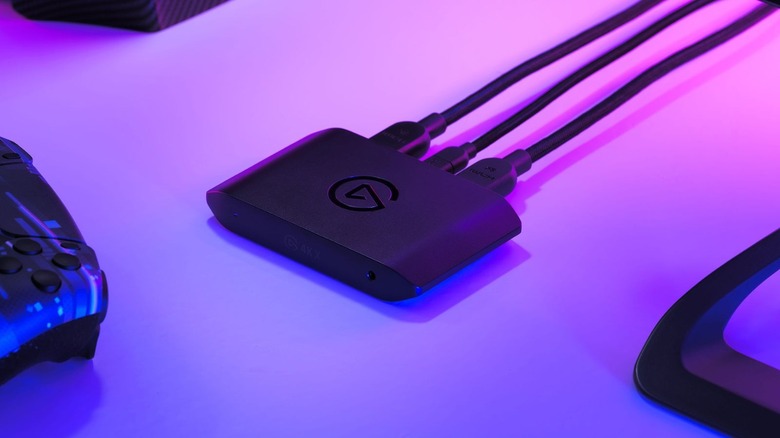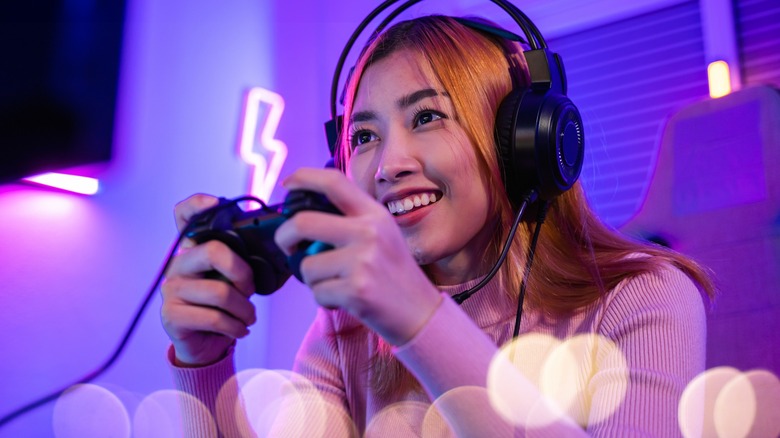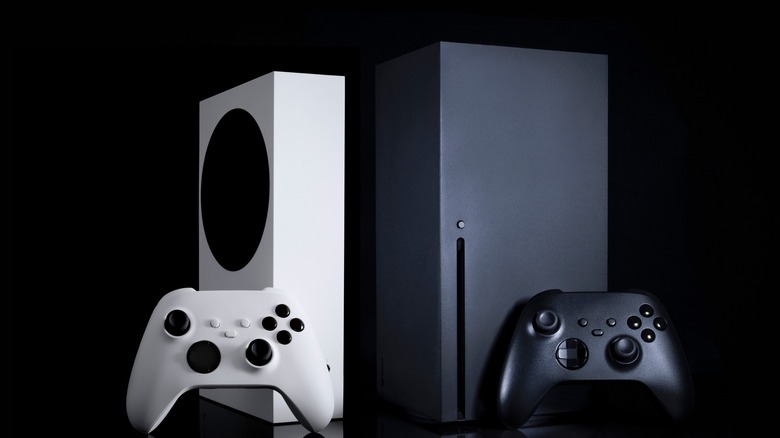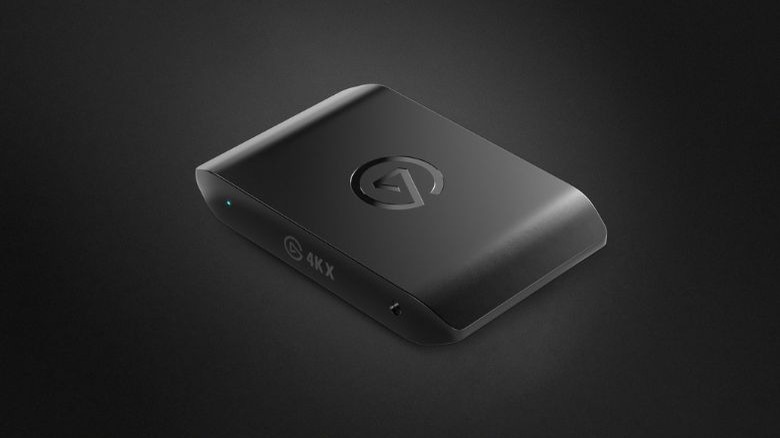Everything To Know About Elgato Capture Cards For Console Streaming
Content-sharing has become integrated into video game culture so heavily that modern consoles are typically all built with some sort of on-device YouTube or Twitch streaming option. Though broadcasting on modern consoles like the PS5 and Xbox Series X|S offer high-resolution and low-latency streams to platforms like Twitch and YouTube, they're limited in additional functions like overlays.
Companies like Elgato offer dedicated capture cards to bridge the gap between the near-limitless features of PC streaming and console broadcasting. These cards take the video being transmitted via the HDMI cable and route it to a connected PC, either to compile it as a video file or broadcast it through a streaming service.
While the process sounds pretty simple, and at a base level, it really is, there's still plenty to know about that Elgato capture card you're eyeing. Along with compatibility concerns, you should have an idea of what the card ultimately does and how it can help you elevate your console streams.
What's the benefit of using a capture card for console streaming?
Before we get into the nitty-gritty of the Elgato 4K X, the latest console-specific capture card, you may question why you even need an external device. Most modern consoles, with the exception of the Switch and Switch Lite, have a means of streaming directly to your desired platform.
However, when broadcasting from a console like the PS5, you're limited to linking either a Twitch or YouTube account. That means you won't be able to livestream to your Facebook Gaming, Kik, or TikTok accounts. Not only does a capture card make it possible to stream to virtually every platform from any compatible device, but you can also customize how the stream will look.
The personality of your streaming channel can easily get lost while Broadcasting from a PS5 or Xbox. Whereas streaming to your PC via a capture card allows you to work with software like OBS and create overlays or custom chat settings, on-console broadcasting limits you to whatever features the console offers. For example, the overlay offered on PS5 is a basic viewer comment thread.
Additionally, if a game restricts broadcasting, such as the concluding chapter of the Final Fantasy VII remake, capture cards can circumvent this block.
It's worth noting that the Switch Lite can't be streamed in any capacity, even with a capture card, since it doesn't offer HDMI output like the regular Switch. So, consider that if you're in the market for a new console and itching to broadcast some Super Mario RPG remake.
What consoles is the latest Elgato capture card compatible with?
Compatibility is one of the biggest concerns you may have regarding going with an Elgato capture card for console streaming. In its earliest form, an Elgato capture device was a simple setup of the standard red, white, and yellow UV cables and a USB cord. So long as the devices you owned supported those cables, the card typically worked. Nowadays, things are a bit more complex with different speeds of HDMI cables and devices with varying USB ports.
However, when it comes to compatibility and cross-device support, Elgato does a decent job of being inclusive. The 4K X is nearly universally compatible, with a few caveats. When it comes to consoles, at least everything back to the Xbox One and PS4 is verified to work via Elgato, though the Nintendo Switch does require the dock to be attached. So, unfortunately, handheld streaming isn't doable as an HDMI connection is required.
You will likely also run into issues if trying to stream from a PS3, as the 4K X requires an unencrypted HDMI signal, and the PS3 transmits a signal with High-bandwidth Digital Content Protection (HDCP) copy protection.
If you're streaming from a mobile device or tablet, you'll need a USB-C or Lightning to HDMI adapter, depending on the brand and how old the device is.
System requirements for the Elgato 4K X
Though the Elgato 4K X may work with your console, there's still the issue of whether your PC or Mac will support the incoming video. According to Elgato, the minimum requirements you need for optimal performance are:
Windows:
- Windows 10 (64-bit)
- CPU: 6th generation Intel Core i5 CPU (i5-6xxx) / AMD Ryzen 5 (3600) or better
- GPU: NVIDIA GeForce GTX 10xx / GTX 9xx (or better) or AMD 4K60SDR / 1080p60 SDR Radeon RX Vega (or better)
- USB: 3.2 Gen 2 port (USB 3.2 Gen 1 works with reduced capture resolution)
- RAM: 8 GB RAM, built-in
Mac:
- macOS 11 Big Sur or later
- CPU: Apple M1 Chip or 4th generation quad‑core Intel Core i5 CPU (i5-4xxx or comparable)
- Graphics: Apple M1 integrated graphics or dedicated GPU (AMD or NVIDIA)
- USB: 3.2 Gen 2 port (USB 3.2 Gen 1 works with reduced capture resolution)
- RAM: 4 GB RAM, built-in USB 3.x port
Both systems also do require an internet connection



